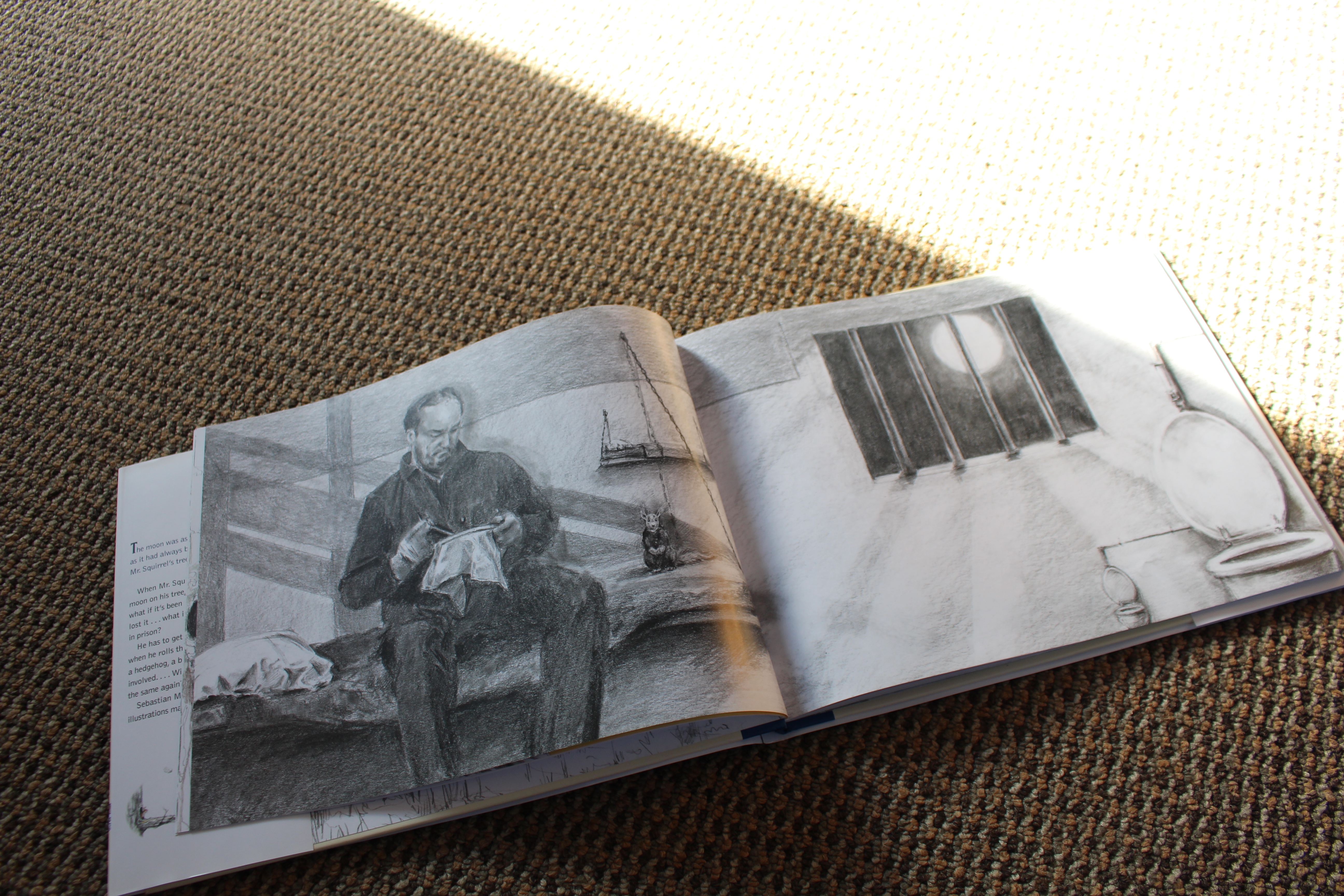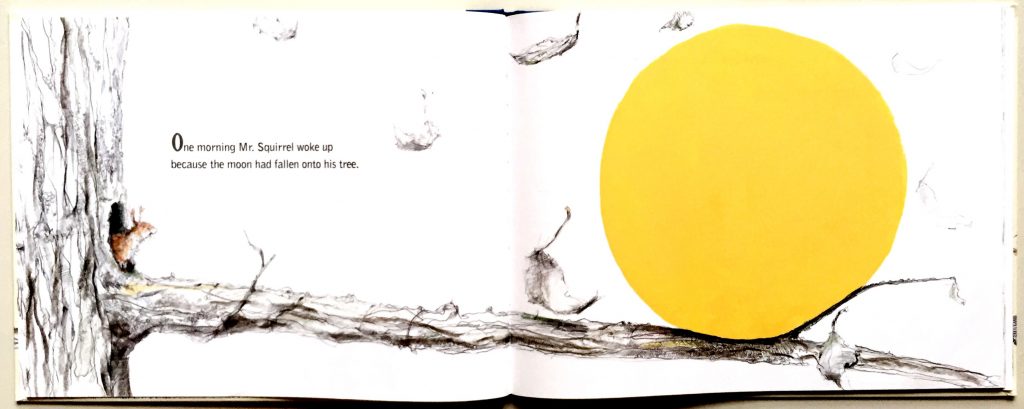“We never seem to forget our first books: the look, feel, and smell of pages daubed with color that pulled us in when we were small.”
And so begins Ellen Handler Spitz’s introduction to her wonderful book Inside Picture Books. She offers insight to many classic picture books for young children such as Harold and the Purple Crayon and Goodnight Moon among others. This treasured book highlights not only the power of these picture books for our emerging readers but it also highlights the importance of them as a “relational” activity.
It is a truism in child development that the very young learn best through relationships, including when adults read aloud to children.

This week, we were fortunate enough to receive the gift of stories read aloud by some lovely individuals from The Commons here in Lincoln. Honestly, it was hard to decide who was having more fun, the children meeting Van and his reading of One Snowy Night or Annie who delighted, anticipating her reading of Emily’s Snails and proclaimed, “Well, I’m having a wonderful time” or even us, hosting this special visit.


We know we are preaching to the choir about the persistent power of words printed on a page to shape children’s lives but sometimes the most obvious and important aspects of our lives go unexamined or even become over-looked.
While reading books independently can reap many benefits, children reading together in a relational sense can take the experience beyond. This can be true of experiencing being with another friend and a book or spending time with a parent as they read to them.



Early in our year, reading aloud the story Don’t Go by Jane Breskin Zalben a conversation among the group bubbled up about Mom and Dads going to work.
“Well, on vacation days she don’t.” -Case
“When we drop him (dad) off at the train station, he gives me a hug and a kiss.” -Tait
“When I go on vacation, it’s all of my family.” -Travers
Very often when reading aloud with our group, conversations bubble up and just as often disagreements. At times these disagreements are embedded in the children’s greater desire to align themselves with a friend. Where one child might express a thought and another a conflicting one, others may join a side simply to say in some way “I’m with you.”
More recently, we noticed a subtle shift in these moments during our read alouds. Owing thanks to Nancy, who participated once in reading to the class. She witnessed first hand the “I’m right, your wrong” dynamics and offered a wise expression that is beginning to soak in.
“Everyone’s ideas matter.”





As with any material in our classroom, books are a staple that are used in a variety of ways to widen our world of understanding, our imagination and even to expand ourselves.
Relationships seep in through the shared experience with these books. Having this experience through read alouds opens us up to others’ thinking through interspersed, open questions allowing for the sharing of each other’s own knowledge or understanding.

Reading Hortense and the Shadow by Natalia O’Hara …
“…because she’s afraid of it.” -Charlie N. responding to another child’s wondering why she is running away from her shadow figure.
“Cause she’s getting bigger and bigger!” -Travers
“Maybe the shadow’s trying to trick her that it’s her friend.” -Travers
“Black Rabbit was her friend.” -Miles remembering another shadow story
“Is that a real girl?” -Travers
“It’s not, it’s the girl’s shadow!” -Charlie N.
While reading Mr. Squirrel and the Moon by Sebastian Meschenmoser we return to the conflict in sharing of each other’s ideas. This delightful book brings us through the humorous story of how a squirrel perceives that the Moon has landed on his tree and if found there someone might think he “stole” it. Through pages with color and text and pages weaving the story wordlessly with simple black and white illustrations we follow squirrel’s plight to rid himself of the Moon before being “caught.”
“I think we do read the book. We do by telling the book.” -Luca expresses that we do in fact, “read” these wordless pages — by their illustrations!
Later in the reading, a disagreement emerges. Just as quickly, we hear…
“Whatever you think matters.” -Case
“Yeah. It doesn’t matter. It doesn’t matter, you just think.” -Travers


